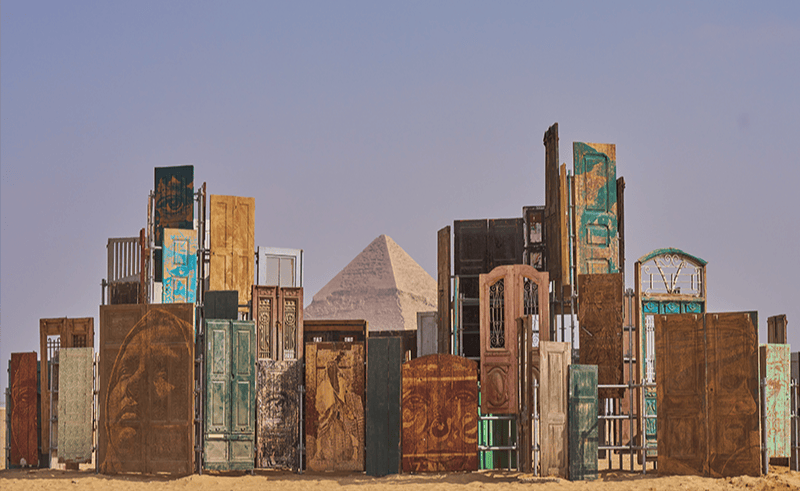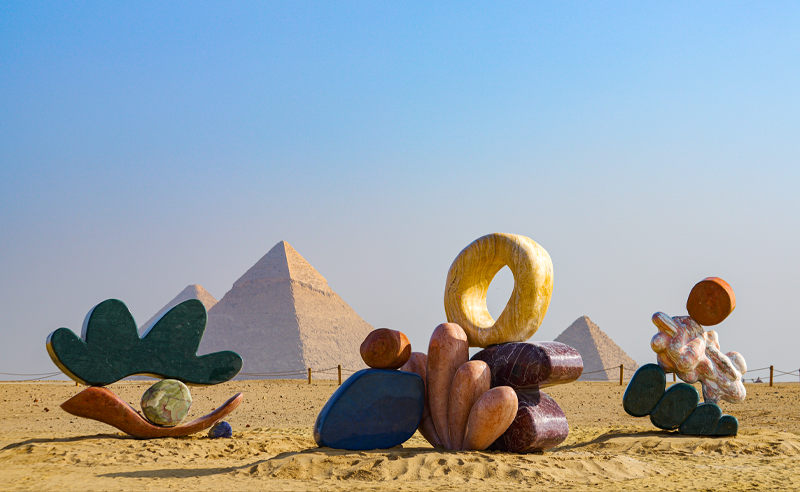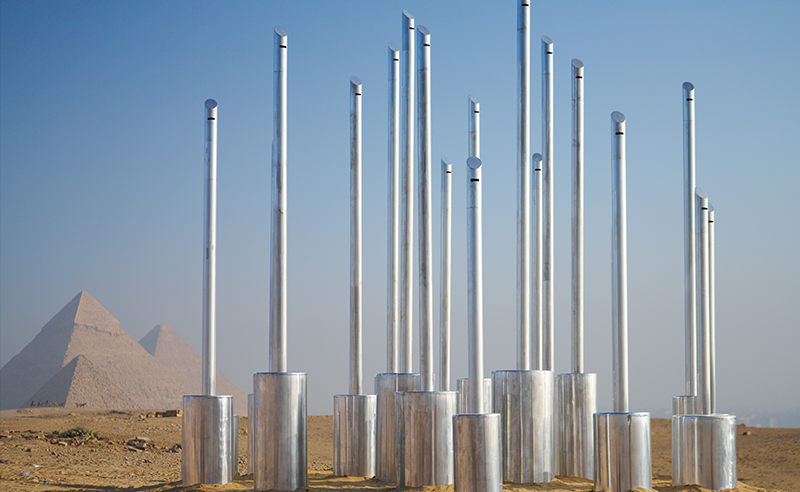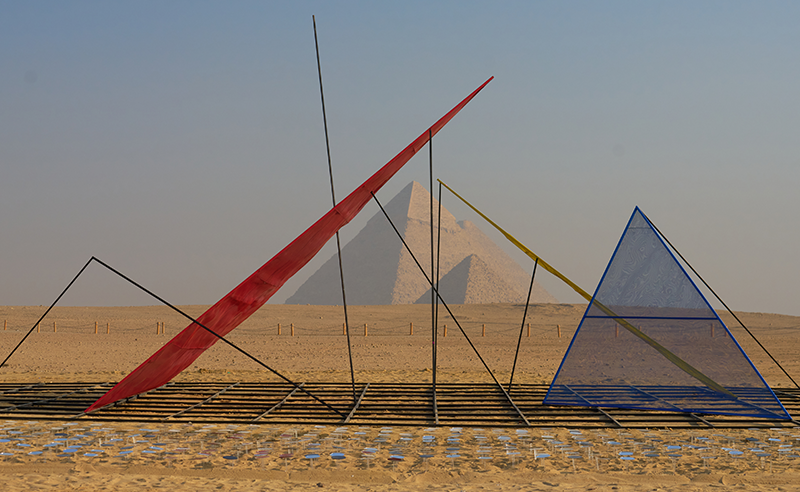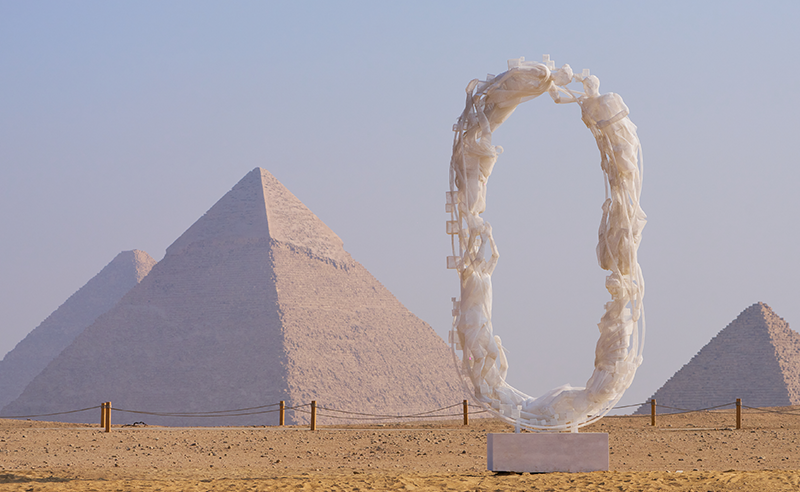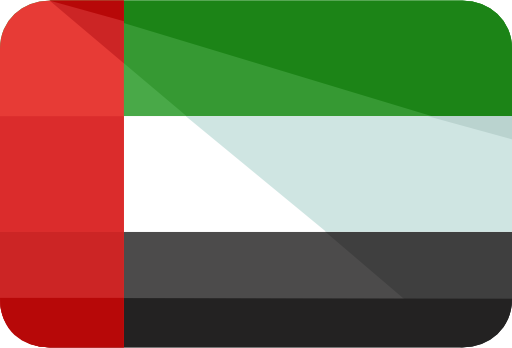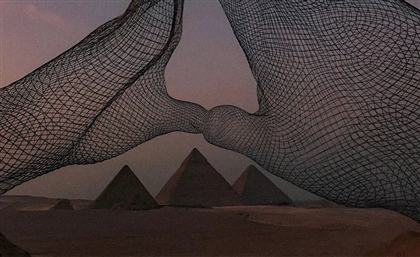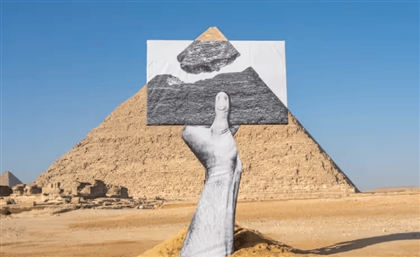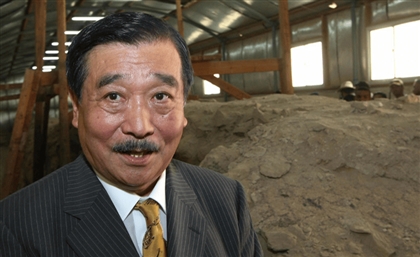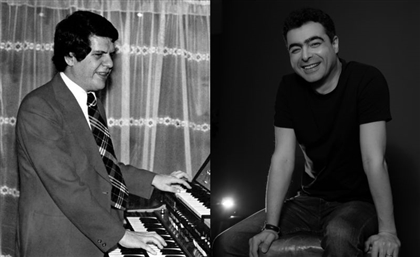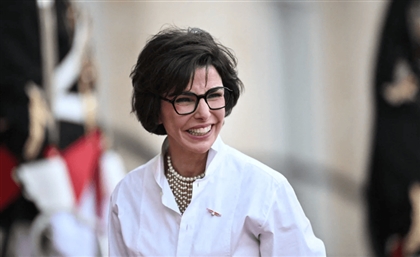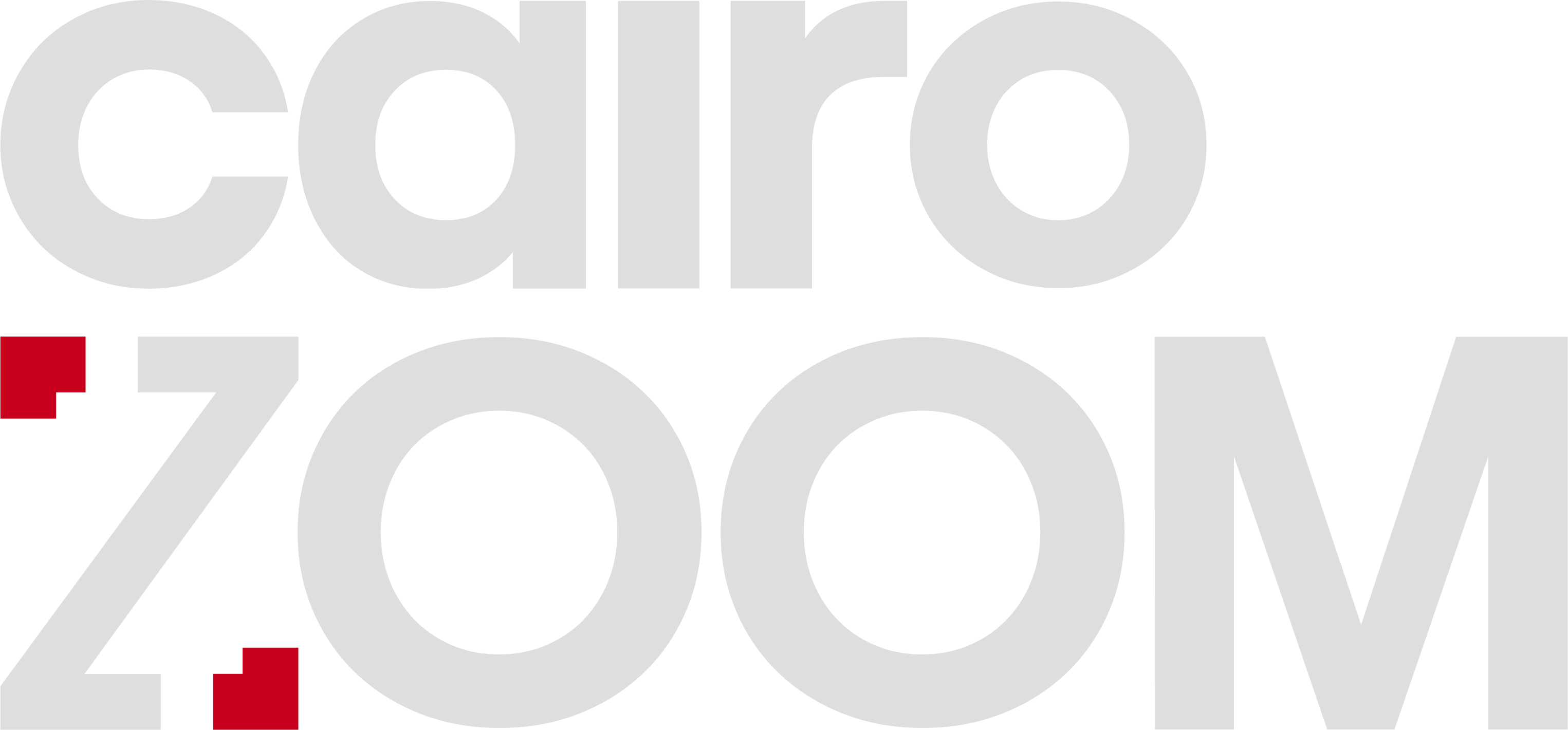The works of ten international artists rise amid the ancient site, on view from today, November 11th, to December 6th.
Forever Is Now, a title and a statement that, for five years, has embodied an aspiration. A promise to let contemporary art and ancient history share the same breath, the same horizon.
Set against the timeless backdrop of the Great Pyramids of Giza, Art D’Egypte’s Forever Is Now brings together contemporary artists from around the world who take on one of the most ambitious artistic challenges imaginable to create installations that rise to meet the weight of history. On these ancient sands, their works become lenses, contrasts, and visions of a future that traces its roots to Egypt.
Now in its fifth edition, Art D’Egypte’s landmark exhibition sees ten artists take over the Giza Plateau once more, inviting audiences from Egypt and beyond to see the pyramids anew, to shift their gaze between heritage and horizon, between what was and what’s still becoming.
Ten installations stand in dialogue with time itself, questioning, reflecting, and juxtaposing the eternal binaries of past and present, permanence and transformation. This year, the theme, immortality, echoes both the timelessness of the pyramids and the enduring spirit of artistic creation.
As always, CairoScene was on the ground at the Pyramids for an exclusive first look at these monumental works redefining the encounter between art and antiquity.
Forever Is Now opens today, November 11th, at the Pyramids and is running until December 6th.
The Third Paradise (Il Terzo Paradiso) by Michelangelo Pistoletto
Conceived by renowned Italian artist Michelangelo Pistoletto, The Third Paradise (Il Terzo Paradiso) is a global artistic movement that envisions harmony between nature and human creation. Its emblem, an evolution of the infinity symbol featuring a central third circle, represents a “third phase” of humanity, one that reconciles the natural and the artificial to cultivate a more balanced, sustainable civilisation.
Echoes of the Infinite by Alex Proba & SolidNature
At the intersection of history, myth, and materiality, Echoes of the Infinite is a sculptural installation that invites viewers into a spatial meditation on time, where stone holds memory and the infinite cycles of transformation resonate across generations. Comprising three distinct sculptures that align into a single monumental form when viewed from specific angles, the work evokes the visual harmony of the Pyramids. The installation is a collaboration between SolidNature’s David Mahyari and Proba, merging David’s passion for stone in design with Proba’s meditative artistic approach.
Doors of Cairo by Alexandre Farto aka Vhils
Doors are the architecture of intimacy. Collected from the streets of Cairo, these gateways hold traces of memory and gesture—they have witnessed meetings and farewells, moments of closeness, shelter, and secrecy. In Doors of Cairo, Portuguese artist Alexandre Farto, known as Vhils, reassembles these reclaimed fragments into a temporary monument, transforming everyday objects into vessels of collective history. Set against the desert landscape, the doors shed their original purpose to become thresholds, portals between past and present. They stand as symbols of human connection and layered histories, the contemporary door leading right into a glorious past.
Wind by Ana Ferrari
When she first came to Forever Is Now three years ago, she was deeply inspired by the wind and the energy it carries. This work emerges as a poetic meditation on the unseen forces that animate our world, encapsulated in the statement: “Reinforcing the connection with nature and highlighting the invisible energy that shapes our life.” Comprising 21 large, polished aluminum flutes arranged in a spiral—the oldest symbol of wind, reflecting its dynamic movement through life—Wind invites the local breeze to serve as its sole musician, transforming natural currents into a resonant symphony of distinct musical notes.
Code of the Eternal by J Park
Known for creating images by printing digital pixels—dots and lines—onto adhesive sheets and selectively removing them, Park expands this technique into the landscape, where signal and noise seamlessly exchange roles. Code of the Eternal adapts Jongkyu Park’s exploration of ‘digital noise’ to the Egyptian desert. The work features a triangular geometric structure within a square frame, encrypted with the identities and phone numbers of numerous individuals, echoing the idea of hidden messages akin to the secrets buried in the ancient pyramids. Its proportions are derived from the height and length of real pyramids, merging geometry with spiritual symbolism.
White Totem of Light by King Houndepinkou
White Totem of Light, built and constructed in Egypt, is adorned with handmade patterns inspired by natural defence systems, elegant, intricate motifs reminiscent of the protective mechanisms found in flowers, plants, and other organic forms. The work is also deeply informed by Vodun altars in Benin, sacred structures that evolve over time through the accumulation of libations, offerings, and ritual textures. Houndepinkou channels this visual and material language in White Totem of Light, crafting a surface that evokes the sacred through a balance of artistry and the organic unpredictability of texture.
The Shen by Mert Ege Köse
Köse’s sculpture, built from aluminum, malleable alloys, and polished surfaces, draws deep inspiration from the ancient Shen symbol, a sign of infinity, wholeness, and divine protection. The continuous loop of the Shen is echoed in Köse’s work, with each piece embodying an eternal cycle of interconnectedness. Like the symbol itself, the sculpture conveys timelessness and unity, as individual elements merge to form a harmonious whole.
Desert Flowers by Nadim Karam
The installation presents three sculptures rising from the sand, resembling lotus flowers unfolding across the desert near the Pyramids of Giza. Each flower contains a core of hidden, untold stories made from scrap, collected from Lebanon. Its petals display patterns crafted from reclaimed materials drawn from Nadim Karam’s earlier works. Desert Flowers reflects on how history, space, and time determine which narratives endure and which fade into memory.
‘Null’ by Recycle Group
Formed from numerous human figures made of plastic mesh, ‘Null’ is a multifaceted symbol. It signifies a starting point, the beginning of a new era, a resetting of old systems with the emergence of an additional fourth digital dimension.
Null is also a religious symbol based on the principle that if the cross was once the basis of chronology on our planet, then zero is its alternative in the New Age. Null or Zero symbolises humanity's transition into a new digital epoch. Plastic mesh material symbolises our new digital shell without visualising the content inside. The human figures, frozen in motion, represent us, caught in the net, stuck in the network. The virtual world is absorbing us more and more, changing our perception of reality.
Maat by Salha ElMasry
A symbol of truth, justice, cosmic order, righteousness, and honesty, Ma'at embodies the principles that govern the universe and the balance between chaos and order and is considered a moral compass for social and religious life. Through this work, I transform a “ring” attributed to one of the kings of ancient Egypt from a small relic worn and used as a seal for documents into a public architectural monument, from personal property to a shared space, and from a sign of authority that tightens restrictions to a lens that opens onto a wider horizon.
